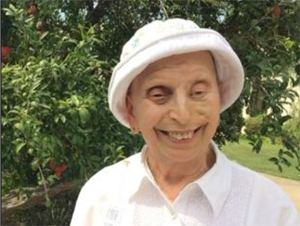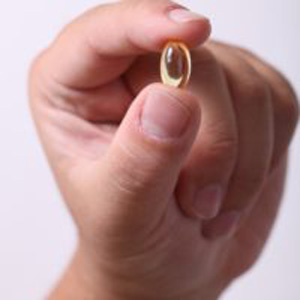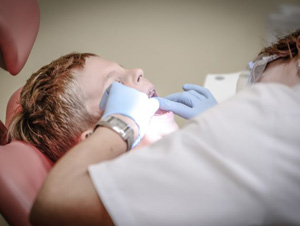How to care for Gorlin syndrome
Managing Gorlin syndrome is a lifelong commitment. Because you are the one ultimately responsible for your care and wellbeing, it’s important to learn all you can about the syndrome and how it may affect your health.
The management of Gorlin syndrome centers on three areas of action: prevention, surveillance and treatment. While not all people with Gorlin syndrome share the same set of symptoms, the approach to disease management is the same.
Prevention
Practice safe sun habits

If you have Gorlin syndrome, it’s important to protect your skin from the sun
People with Gorlin syndrome are prone to getting multiple basal cell carcinomas over their lifetimes so practicing safe sun habits is a must.
Before going outside:
- Apply a physical blocking sunscreen that contains zinc oxide and/or titanium dioxide for children through teens. Teenagers through adults can use broad spectrum sunscreens that contain chemical and physical blockers.
- Cover up exposed skin with sun-protective clothing including a wide-brimmed hat
While outside:
- Spend your time in the shade, especially when the sun is at its strongest between 10 a.m. and 4 p.m.
- Reapply sunscreen every two hours, more frequently if you are swimming or sweating a lot
- Wear sunglasses
Outdoor tanning or the use of tanning beds is not recommended for people with Gorlin syndrome.
Avoid excessive radiation
Exposure to radiation can contribute to the development of BCCs in people with Gorlin syndrome. Those with Gorlin syndrome should avoid x-rays and radiation therapy unless necessary.

People with Gorlin syndrome may benefit from taking a vitamin D supplement
Vitamins and supplements
Many people with Gorlin syndrome are also deficient in vitamin D and may benefit from taking a vitamin D supplement in addition to eating a healthy diet. Vitamin D is important for immune system functioning and bone health.
NIH Office of Dietary Supplements recommends the average American adult get 1,000 to 4,000 IUs of vitamin D per day. A health care provider can provide personalized recommendations for individuals with Gorlin syndrome.
Surveillance
The signs and symptoms of Gorlin syndrome can develop and change over time. To understand and identify these changes, a health care provider first must establish a baseline, or starting point, for each symptom in a person with Gorlin syndrome.
Recommended baseline tests and exams for children and adults newly diagnosed with Gorlin syndrome include:

Recommended tests for infants newly diagnosed with Gorlin syndrome include measuring the size of the head
- MRI of the brain
- Cardiac ultrasound
- For infants, measurement of head circumference
- For infants, physical exam to identify significant birth defects
- Full body skin check by a dermatologist for basal cell carcinomas (BCCs) and other issues
- Digital panorex of jaw for odontogenic keratocystic tumors (OKCs) starting at age 8
- MRI of the spine (age 1 year or older) if medulloblastoma is suspected
- Pelvic ultrasound (females only, after first period)
- Ophthalmology exam
- Genetics evaluation
- Psychological examination to establish emotional support plan
Once the baseline tests and exams are complete, people with Gorlin syndrome should work with their health care team to monitor signs and symptoms.
Recommended monitoring for children with Gorlin syndrome include:
- An annual MRI of the brain until 8 years of age
- A digital panorex of jaw every six months after the appearance of the first OKC until there are no cysts for two years
- Skin examinations by a dermatologist every six months or more frequently if there are BCCs and once a year if there are no BCCs
- Regular spine MRIs if there is presence of scoliosis
- Annual hearing, vision and speech evaluations
- Routine well-child visits to establish developmental milestones are being met
- Cardiac ultrasounds if heart symptoms are found in the baseline test
- For girls, regular pelvic ultrasounds if ovarian fibromas are found in the initial test
- Annual genetics evaluation
- Regular psychological examinations for emotional health
Recommended monitoring for adults with Gorlin syndrome:
-

OKCs require regular monitoring by a qualified dentist to avoid teeth and jaw complications
An MRI of the brain if symptoms are found in the baseline test
- A digital panorex of jaw done annually or more often if OKCs are present
- Skin examinations by a dermatologist every four months or more frequently if there are BCCs present
- Regular spine MRIs if there is presence of scoliosis
- Annual hearing, vision and speech evaluations
- Cardiac ultrasounds if heart symptoms are found in the baseline test
- For women, regular pelvic ultrasounds if ovarian fibromas are found in the initial test
- For women, regular gynecologic health checks
- Annual genetics evaluation
- Regular psychological examinations for emotional health
- Annual nutritional assessment
- Annual neurology evaluation if prior medulloblastoma
Regular surveillance of the signs and symptoms of Gorlin syndrome helps health care providers catch changes early and work with the individual affected to develop an appropriate care plan based on symptoms and manifestations.
Treatment

Regular visits to a dentist can help spot and treat OKCs early.
Many symptoms of Gorlin syndrome generally do not require treatment. Other symptoms such as ovarian fibromas, warrant close monitoring and possible treatment. Still others such as BCCs and OKCs, must be treated or they will significantly impact health if allowed to grow and multiply.
Different signs and symptoms of Gorlin syndrome require different treatment approaches. Treatment often requires the coordination of a team of health care providers including specialists in dermatology, cardiology, plastic surgery, ophthalmology and oral surgery.
Learn more about specific treatment options for:
